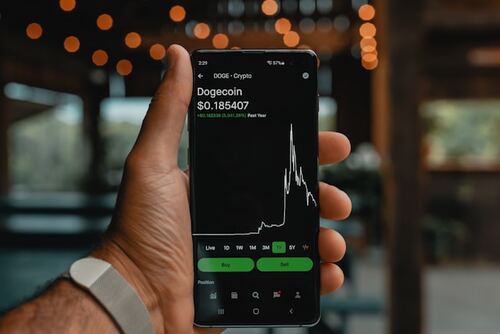WebdriverIO is one of the robust and powerful test automation frameworks that allows software developers to write consistent and scalable E2E tests. The most critical facet of ensuring a robust user experience is visual reliability across various releases and upgrades. Visual regression testing plays a pivotal role in detecting unintended UI changes.
Integrating WebdriverIO with visual regression tools enhances the testing suite by automatically comparing the current state of the application with a previously approved state. The most recent standard version of WebdriverIO is 8.32, launched in Feb 2024. This article delves into the significance, setup, and best practices for integrating WebdriverIO with visual regression tools.
What are Visual Regression Testing tools?
Visual regression testing tools, usually loaded with AI features, assist the visible testing procedure by decreasing the chances of false positives. This functionality allows groups to save resources and focus on critical tasks. Based on the Image Comparison technique, these tools automate the contrast of the current GUI with the anticipated GUI to discover visual bugs, removing the need for checks by QA testers.
To fix the sensitivity of the Image Comparison technique, multiple visual test tools enable specialists to detect & ‘ignore’ dynamic zones. Such zones prevent those areas from being flagged as bugs. A high-quality addition in several tools is the Layout Comparison function, which defines and fits various zones between the baseline GUI and the actual GUI to highlight format adjustments, thereby improving the depth of visual testing.
The Significance of Visual Regression Testing
Visual regression tests support that the app’s visual presence remains constant over time. They help discover discrepancies in layout, style, and content material, which are missed by traditional functional tests. Integrating visible regression testing into the Continuous Integration/Continuous Delivery pipeline allows teams to catch visual bugs early in the improvement method, reducing the risk of launching a faulty consumer interface.
Advantages of Visual Regression Testing
- Early Detection of UI Issues permits teams to identify visible defects early, preventing high-priced fixes later.
- Improved User Experience ensures that User Interface changes do not negatively impact the user experience.
- Automated Verification reduces the need for manual UI verification, saving time and effort.
- Consistent Quality maintains a regular appearance and experience throughout different releases.
Choosing a Visual Regression Tool
WebdriverIO can combine with several tools for visual regression testing. The preference of tools relies upon elements which include ease of integration, overall performance, assistance for special browsers and gadgets, and the extent of customization required. Some popular visual regression tools consist of:
LambdaTest
LambdaTest introduces a SmartUI platform that enables teams to evaluate two image layouts and spot discrepancies. Testers can easily discover even the smallest visible bugs by uploading screenshots of the baseline and contrast image.
Highlighting Traits:
- The platform offers smart on-cloud visible regression testing capable of figuring out visual bugs associated with icon color, size, padding, format, text, and element positions.
- Support testing with tools like Selenium. New to Selenium? Read to know more what is Selenium.
- Users can pick from over 3000 actual browsers and operating systems, counting Chrome, Firefox, Internet Explorer, Safari, MS Edge, and others.
- It supports parallel tests to cut down implementation time by 10x.
- Incorporates seamlessly with a numerous ecosystem supporting 120 integrations.
AyeSpy
AyeSpy is a lesser-recognized yet quite beneficial tool for automating visual testing. This amazing tool comes under the best free visual testing open-source tools.
Highlighting Traits:
- Operates seamlessly on Selenium Grid.
- Inspired by Backstop and Wraith — both well-known visual regression test tools.
- Screenshots can be taken for multiple branches, which reduces testing time.
- Its creators spotlight its standout feature: drastically progressed performance compared to other equipment, capable of running 40 screenshot comparisons in keeping with minutes.
- Setting up is easy and has clear documentation, allowing teams to begin quickly and without difficulty.
- It helps capture screenshots for several branches, successfully reducing testing time.
SikuliX
SikuliX is an open-source visual regression testing device that utilizes Image Recognition and GUI Control technology to pick out precise buttons on the screen. Testers can then interact with these buttons using mouse and keyboard controls, making SikuliX particularly useful in scenarios where you can’t access the source code of the app or web page.
Highlighting Traits:
- Used for Flash Objects/Flash Websites automation.
- Supports visual testing for desktop applications and web pages on Windows, Android, Mac, iPhone, and Linux.
- Automates certain tasks on the GUI without knowing the ID of the elements.
- Easily integrated into other 3rd party apps.
Integrating WebdriverIO with Visual Regression Tools
Blending WebdriverIO with visual regression tools can notably improve your automation test procedure by confirming that your web app’s visual appearance remains constant.
Setup and Configuration
The integration process involves setting up WebdriverIO along with the chosen visual regression tool.
1. Install Dependencies:
First, install WebdriverIO and Applitools Eyes SDK.
2. Initialize WebdriverIO:
Initialize a WebdriverIO project if you haven’t already.
npx wdio config
Follow the prompts to set up your WebdriverIO configuration file (wdio.conf.js).
3. Run Tests:
Run your WebdriverIO tests.
To further elevate your visual regression tests, consider using LambdaTest. It offers a complete cloud-powered platform for cross-browser tests, enabling you to conduct your WebdriverIO testing across an extensive series of device and browser combinations. With LambdaTest, you can:
- Automate visual regression testing at scale: Conduct your visual regression testing in parallel across several devices and browsers to accelerate your test process.
- Smooth Incorporation with WebdriverIO and other frameworks: Effortlessly incorporate LambdaTest with your current test frameworks and CI/CD pipelines for a seamless workflow.
- Comprehensive visual test reports: Get full reports that highlight visual variances, making it simpler to detect & fix issues rapidly.
- Live & automated testing: Run both live, interactive tests and automated, continuous tests to ensure your app is always performing as projected.
By incorporating LambdaTest into your QA strategy, you can confirm that your web apps are visually consistent, top-quality, and deliver a smooth user experience across all platforms.
Best practices for Visual Regression Tests with WebdriverIO
Visual regression testing is essential for managing the visual integrity of your web apps, confirming that new modifications don’t introduce unintended visual problems. Incorporating visual regression tests with WebdriverIO can assist in automating this procedure. Some of the best practices are as follows:
1. Build Clear Baseline Images
Why It is Significant: Baseline images are the referral point against which new screenshots are compared. Confirming they are up-to-date and accurate is crucial for meaningful comparisons.
Best Practices:
- Initial Setup: Generate a comprehensive series of baseline images when you first execute visual regression tests.
- Frequent Updates: Update baseline images when intentional visual alterations are made to the app.
- Version Control: Collect baseline images in version control for tracking changes over time and roll back if required.
2. Utilize Constant Environments
Why It is Significant: Changes in environments can result in inconsistent outcomes, causing false negatives or false positives in visual testing.
Best Practices:
- Fixed OS and Browser: Conduct testing on a constant browser and OS combination.
- Viewports and Resolution: Utilize fixed viewports and screen resolutions to confirm constant rendering.
- Environment Variables: Utilize the same environment settings (e.g., time zone, locale) for all testing.
3. Manage Robust Content
Why It is Significant: Dynamic content, such as pop-ups, ads, or user-centric data, can change between test runs, resulting in false positives.
Best Practices:
- Hide Dynamic Elements: Utilize JavaScript or CSS to remove or hide components that change frequently.
- Static States: Configure testing to set a static condition before capturing screenshots. This may include mocking data or utilizing predefined user accounts.
- Waiting for Stability: Confirm the page has completely loaded and is stable before taking screenshots.
4. Incremental Tests
Why It is Significant: Testing smaller segments of your app can aid in isolating issues and reducing the intricacy of test maintenance.
Best Practices:
- Page Segments: Break down larger pages into small fragments & independently test them.
- Component Tests: Test separate elements or sections of your app separately.
5. Automate Test Implementation
Why It is Significant: Automating visual regression testing confirms they are run frequently and constantly, offering early identification of visual issues.
Best Practices:
- Scheduled Runs: Set up scheduled testing runs to constantly check the visual integrity of your app.
- CI/CD Incorporation: Incorporate visual regression testing into your CI/CD pipeline to run them on each code commit or deployment.
6. Utilize Effective Thresholds
Why It is Significant: Thresholds determine the visual comparison sensitivity, balancing between detection of genuine issues and ignoring minor changes.
Best Practices:
- Proper Tolerance: Setting a tolerance level will balance finding important visual changes while ignoring minor variations such as anti-aliasing.
- Adjust Thresholds: Custom thresholds based on the criticality of the portion being tested (for instance, higher sensitivity for core User Interface elements).
7. Comprehensive Reporting & Review
Why It is Significant: Clear and comprehensive reports aid in rapidly detecting and solving visual discrepancies.
Best Practices:
- Visual Diff Reports: Make use of tools that offer visual diff images revealing differences.
- Automated Alert or Notifications: Set up automated alerts to notify the team about regression test failures.
- Review Procedure: Execute a review process for failed tests to check if the variations are defects or intentional.
8. Leverage AI-Centric Tools
Why It is Significant: AI-centric visual test tools can smartly identify meaningful visual changes and ignore irrelevant variations, reducing false positives.
Best Practices:
- Custom AI-based Models: Train custom AI-based models if required, to better suit your app’s exclusive visual needs.
- Advanced Tools: Consider utilizing tools that leverage AI for accurate visual comparisons.
Conclusion
Visual regression testing ensures a splendid GUI for users, making it a valuable practice. Manual testing and using open-supply tools for computerized UI testing can be prolonged and inefficient. Therefore, corporations need to invest in a protracted-term low-code solution.
Market-leading tools for visible regression testing employ AI/ML to maximize effectiveness. These solutions discover adjustments inside the GUI and speedy pinpoint errors with high accuracy. Quality solutions like these assist companies set up their merchandise most successfully, instilling self-assurance in the deployment method.
Embrace the power of visual regression tests with WebdriverIO and LambdaTest to attain superior software quality & speedy release cycles. Incorporating such tools and practices into your workflow not only enhances the accuracy and effectiveness of your tests but also contributes to the overall quality and reliability of your applications. And if you are wondering “what is Selenium?”—it is the robust foundation that allows these modern test capabilities, making it a crucial tool in your automation toolkit.
Frequently Asked Questions (FAQs)
· What is WebdriverIO?
It is a strong test automation framework for mobile & web apps. It offers a user-friendly interface for interacting with mobile devices and web browsers, making it suitable for E2E testing.
· Why is a visual regression test important?
This kind of testing guarantees that the visual facets of your web app remain consistent after code alterations. It helps determine unintended visual changes, such as missing elements, color changes, and layout shifts.
· Can I customize the thresholds for visual variances in these tools?
Yes, most tools for visual regression enable you to customize the threshold for visual variances. This setting detects the sensitivity of the comparison. For instance, in Resemble.js, you can set the tolerance threshold by using rawMisMatchPercentage.



